In this post, I will be taking a closer look at “The Starry Night” by Vincent van Gogh, which he painted in 1889. With swirling lines and dramatic colors, this dreamy depiction is one of van Gogh’s most iconic works.
“I don’t know anything with certainty, but seeing the stars makes me dream.” Vincent van Gogh
- Interesting Facts About “The Starry Night”
- Swirling Brushwork Used to Create a Sense of Movement and Turbulence
- Color and Light
- Where Realism Meets Abstraction
- Key Takeaways
- Additional Readings
- Want to Learn More?
- Thanks for Reading!

Interesting Facts About “The Starry Night”
- The painting is based on van Gogh’s view from his room in the mental asylum at Saint-Rémy-de-Provence. It was painted from memory during the day, as he was not able to paint from his room. But he was able to create sketches in ink and charcoal.
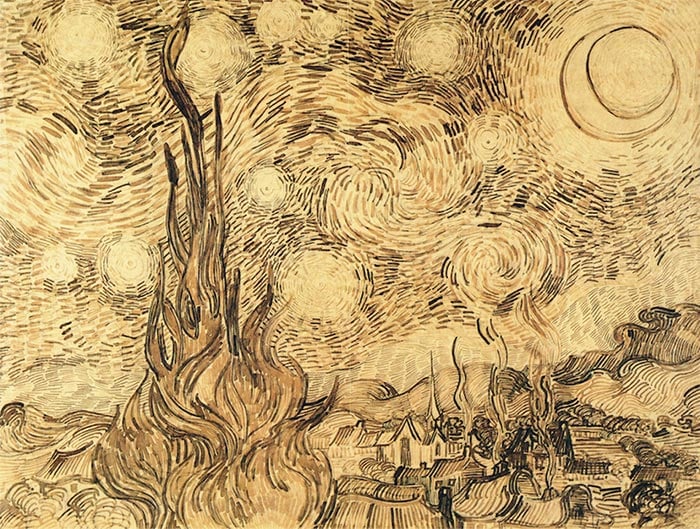
- “The Starry Night” is one in a series of 21 versions based on the same subject. It is the only night version in the series.
- Letters from van Gogh to his brother Theo provide insights into van Gogh’s inspiration and fascination with the night. In 1889 he wrote, “Through the iron-barred window I can make out a square of wheat in an enclosure, above which in the morning I see the sun rise in its glory.”
- Although it is one of his most famous works, he initially considered the painting to be a failure based on his letters to Theo.
- Research suggests the moon was not actually in the crescent phase, as depicted in the painting. Rather, it would have been about three-quarters full, but van Gogh probably painted it this way for stylistic reasons.
- Research also suggests that the brightest “star” in the painting, just to the right of the large cypress tree (pictured below), may actually be Venus which would have been visible at the time van Gogh was painting in the asylum.

Swirling Brushwork Used to Create a Sense of Movement and Turbulence
When I think of “The Starry Night”, the first thing which comes to mind is the swirling brushwork which creates a sense of movement and turbulence, especially in the sky. In fact, a physicist by the name of Jose Luis Aragon suggested that the swirling brushwork in paintings like “The Starry Night” have an uncanny resemblance to the mathematical expression of real turbulence shown in natural occurrences like whirlpools and air streams. You can read more on this here.
Van Gogh used a loaded brush to build up a thick, impasto texture which you can see in the close-ups below. This impasto texture is a key feature in many of van Gogh’s works.
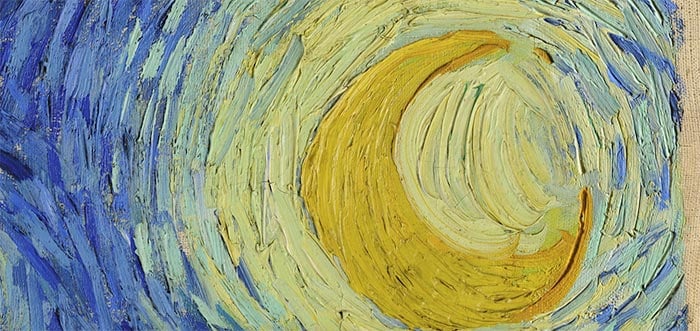


Color and Light
In a letter to his brother Theo, van Gogh wrote that the “starry night is more alive and more richly colored than the day”. This may explain his exaggerated use of of color.
Van Gogh used rich blues and yellows to paint the night sky, with light greens scattered throughout. His lack of blending creates a broken color effect, which seems to reiterate the sense of movement and turbulence in the painting. The colors appear to vibrate as your eyes bounce between all the distinct colors.
He painted the light of the stars, moon and houses by contrasting vivid yellows and oranges against the blues and greens in the rest of the painting. If you look closely, you will see that in most cases he used a saturated yellow or orange in the centre, then used lighter but less saturated colors around the outside.
He used a light green almost as an interim color to transition from the bright yellows and oranges to the deep blues. Green being what you get when you mix yellow and blue together. By doing that, there appears to be some kind of color gradation even though he did not use any blending.
Where Realism Meets Abstraction
To me, this painting marks an interesting area somewhere between realism and complete abstraction. Van Gogh pushed the colors and style in order to depict his unique interpretation of the world, but not so much as to lose all qualities of realism and representation. You know exactly what the subject is, but it is far from what you would see in life.
I enjoy this area in painting as I think it allows for some personal expression, without departing too far from representational art standards.
But of course, this is all just personal commentary which does not really matter. There is no right answer with this kind of stuff. Some admire van Gogh for his unique interpretations, whilst others criticise him for stepping too far away from the boundaries of reality. It is just interesting to ponder over.
Key Takeaways
Here are some of the key takeaways of “The Starry Night” which you could incorporate into your own paintings:
- Exaggerating certain elements like color and perspective can really help you depict the emotions and feelings you have about a subject. In this case, van Gogh exaggerated the colors, form and perspective to create a very dreamy depiction.
- To paint light, you could use a strong color contrast, like yellow and orange against blue.
- Directional brushwork can be used to create a sense of movement and turbulence in your painting.
- By repeating similar techniques and processes, you end up creating a strong style which people can remember you by.
Additional Readings
11 Interesting Facts About Vincent van Gogh
Inspirational Quotes by Vincent van Gogh
How Vincent van Gogh Used Complementary Colors
Want to Learn More?
You might be interested in my Painting Academy course. I’ll walk you through the time-tested fundamentals of painting. It’s perfect for absolute beginner to intermediate painters.
Thanks for Reading!
I appreciate you taking the time to read this post and I hope you found it helpful. Feel free to share it with friends.
Happy painting!
Dan Scott

Draw Paint Academy


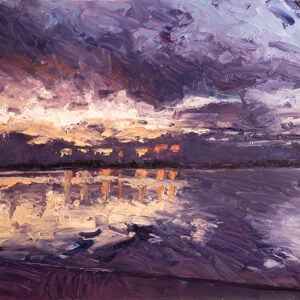
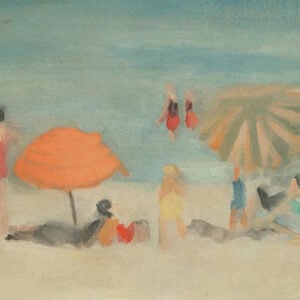
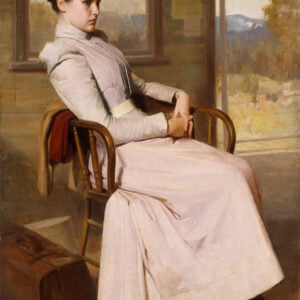
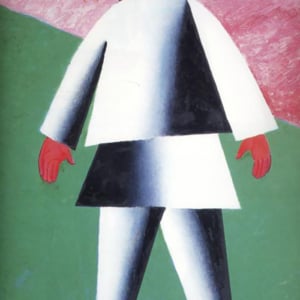
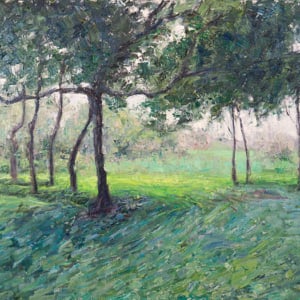
Van Gogh’s work, especially his Starry Night series, always fascinated me. Thank you for this article – really interesting to read the colour theory behind his work. .
No problem at all Cat. Glad you enjoyed it! Thanks, Dan
The cypress applauds the show in dark shadows watching the spector weave between the stars performing its nightly dance with arm curling out searching for souls to capture.
I loved this and look forward to seeing other masters featured. Thank you for Van Gogh. My style has been compared to his, and I loved reading about his techniques.
Great to hear Linda! Thanks, Dan
I loved this post and learnt a lot….loved his quotes too!
Thanks
Shirley
Glad to hear this Shirley! Thanks, Dan
Love your comments on the Masters. Please do more!
Thanks Patricia, more to come! Dan
Thanks Dan for the emails.
I like reading about technique. My wife and I saw “At Eternity’s Gate”, the new film
about Van Gogh today. Interesting insights into him and his way of seeing. My wife says it is true to the Biography of him by Naifeh and Smith. I am just getting started with painting again after doing a little bit when I was 20 nearly 50 years ago.
Thanks again
Kind regards, Brian
Thanks Brian! I will check out this movie, thanks for letting me know. Kind regards, Dan
In the new movie Gauguin criticises VG for painting so quickly. He replies that it is the only way he can paint. G says but then you overpaint as though you are creating a sculpture. Interesting. William Dafoe does a great job playing VG. Many interesting insights.
Also your next landscape course, is that oils or acrylics. I am using acrylics.
Thanks, B
Very interesting and informative, thanks Dan!
It is my pleasure Mariette! Thanks, Dan
One of my favorite paintings and artists. Thanks for sharing. This was great! As well as the quotes!
Glad to hear this Betty! Thanks, Dan
Thanks Dan for an other fascinating post. I am lucky enough to have seen his home in Auvers as well as the museum in Amsterdam.
Thanks Charles! I will need to visit the museum soon. Dan
Thank you for this Vincent article, Dan. Really interesting and I love the technique / colour theory information. The turbulence in the landscape mirrors van Gogh’s own inner turmoil, and its so useful to have this described. Keep your articles coming, I love them and find them very inspiring! Thank you.
Glad to hear this! Thank you. Dan
Dear Dan,
While Van Gogh is not my favorite, I appreciate his work much more when you feature them and comment on them. I am a 71 year old woman who has had a passion to paint since my childhood but as an adult have never picked up a brush. I have my mothers oils, a beautiful easel, a supply of canvas boards and mother’s various art books. I think I have a fear of failure, which I would really like to overcome. My personal favorite is Desgas.
I live in the Ozarks in southwestern Missouri USA and have a plethora of beauty around my property. I am drawn to trying watercolor and would live to make my own paint.
Thank you Dan for giving me hope and encouragement through these emails.
Sara Trout
Thank you Dan. I loved your article and have so much more appreciation for Van Gogh’s Starry Night.
Happy to hear Karen! Thanks, Dan
thanks I really enjoyed the history behind the painting……
No problem Helen! Dan
Yes more master work studies, please! Your articles are always so informative, easy to understand. Thank you.
No problem Louise! I will be doing a painting breakdown post each week. Thanks, Dan
How you manage to find the time for your wonderfully informative ideas and tips for keen amateur painters, I have no idea. But, I do have enormous respect and gratitude that you do. Keep them coming please. I am hopeful that I can set aside a time from my work to become one of your course students. Watercolour is my medium so when a course slants towards that, I shall move mountains to be on it. Thank you for your generosity to us all.
Thanks for your kind words Clare. It is easy to find the time when you enjoy doing it. Just glad to be able to help so many people. Planning to do some watercolor work this year! Will keep you posted. Thanks again, Dan
Such a useful and informative article. Looking forward to more of these insights!
Thanks Morag! Dan
It is moving to listen to Don MacLean’s ” Vincent” while viewing Starry Night. It was written as a tribute to Van Gogh’s turbulent life.
Interesting thanks Louise! I will need to check that out. Dan
Thank you for your informative emails. Educational and insightful. I particularly enjoy the points you make for developing a style and technique.
Please keep them coming.
Glad to hear this Mabel! More to come. Dan
Thank you for sharing these informative reviews. I am looking forward to the next one.
My pleasure Victoria! Thanks, Dan
Thank you for your explanation of Van Gogh’s Starry Night”. I look forward to more informative emails.
No problem at all Jane! Glad you enjoyed it. Dan
Thanks, Dan for the post! Really like to read more of “A Closer Look” to get to know more paintings. I’m just started to learn acrylic painting and I like your techniques and color posts. Keep it up!
Thanks Elaine! No problem at all, I will be completing a painting breakdown of a master painting each week. Dan
This was very interesting I had forgotten he was in an asylum. Your facts are easy to read and remember. Love this please do more.
Glad to hear this Sandi! Thank you. Dan
Dan, Thanks for the post. Great info throughout.
I visited a show at a museum on the outskirts of Philadelphia, PA many years ago and was stunned by Van Gogh’s paintings there. The color and energy he put into his paintings can still be felt! Amazing.
He has been a favorite since I was a young child.
Please continue to post and show us more.
Best, Larry
Thanks Larry! Dan
Your discussion of Van Gough’s Starry Night was great. Short, to the point with bullet points. Informative and helpful. Keep these discussions coming.
Glad to hear this Sonnie! Thanks, Dan
Although I don’t care for Van Gough, the article is very interesting, and would like to hear about other master’s of art. I started painting a year And a half ago, and I love the creativity.
Happy to hear this Carolyn! I will be completing a painting breakdown post on a master painting each week. Thanks, Dan
Hello Dan yes Thank you for this post. I really needed some insight, I’m busy creating my own interpretation of Starry Night for my Wife.
Marco
No problem at all Marco! Happy to help. Dan
Thanks for this great article, Dan. I have been lucky enough to see many of his works in various locations, (St-Remy, Arles, and in several museums.) I am looking forward to seeing the Van Gogh exhibit at the Atelier des Lumieres in Paris at the end of April.
Sue
That sounds wonderful Susan! Glad you enjoyed the post. Thanks, Dan
Thank you for this article. Has anyone read the book “Dear Theo” ?
No problem Lisa, Thanks! No I haven’t but I will look into it soon. Dan
Having just started painting, and I have a lot to learn, thought I would have a ‘go’ at one of the Masters. Van Gough came to mind. Searching through a pile of eltronuc reproductions I came across this one by Van Gough. I did not like my effort. However I found myself going back to it continually. There is something in that painting that touches something deep within me. I knew nothing of its history till reading your article Dan. I decided to have another go and let “whatever” emerge from within me. Hmmmm!
Sounds good Tom. Feel free to email me a completed photo of your painting privately. Dan
I enjoy the history and points! Love Van Gough
Thanks Kathy, glad to hear this! Dan
Van Gogh had a special intuition. I always liked this painting because when I studied climatology I understood that this is how the air moves due to its different densities derived from temperature differences, which cause turbulence. This is well known to paragliders and helicopter riders!
I do not know how to add an illustration to the comment, but it can be found in a manual for paragliders.
Thanks Cecilia! Very interesting. Unfortunately you cannot add images to comments, but feel free to email it to me. Dan
Thanks Dan, I am a physician and have allways thought that he had glaucom, that would explain the rings around the stars. just m thoughts.
Dan did you get my comment on Van Gogh, as a physician I have always thought He a condition called glaucoma, which would explain the rings around the stars, or any bright light at night.
Hi Lloyd, thanks for pointing that out! Dan
This was a goid read. Learned so much about Van Gogh’s brushwork. I struggle with value when I work in colour. Thank you
Thanks, happy to be able to help! Dan
Oh yes,Dan. More. I really enjoyed the Van Gogh article. Never realized he used light green in the stars. Cezanne is one I would love to understand more about. His method is a mystery to me. Many thanks.
Thanks Kay! I will add Paul Cézanne to the list to write about soon. Dan
Dan, thank you for breaking this dps so clearly. I am 75 and have been painting since I was nine. You are the best instructor of painting I hAve ever had. What a privilege. Please continue as you get the time as this is of great value.
Hi James.
Thanks for your kinds words!
I am just happy to help and glad the information is useful to you.
Dan
Wonderful Article, Dan. Thank-you. I, like others would like more articlers on masterworks, perhaps from artists on the verge of their particular style, similar to van gogh. On hindsight, you have done a pretty good job of doing just that so far, do please for our sake, keep up the good work. I am hoping to support you soon through taking a course, not simply to support you, I need it ! LOL Thank you for your insight.
Will Burgess
Thank you Will! Happy to hear the information is helpful for you. Dan
Hi Dan, what else is there to add in positive comments about your article on vanGogh? I love to see and hear more on any of these Old Masters! I did a painting on vG’s one with the irises at the bottom. To learn his technique. Was fun to do. Further I am asked on a number of occassions how come they see something of vG in my paintings and one even asked (tongue in cheek) if I was maybe a descendant of vG! Being a Dutchy! ? Pls keep going with these posts!!!
Will do Trudy! Keep up the good work. Dan
I have never been a fan of van Gogh. However, I am not walking away from the fact that he is well accepted by the art world now (not while he was alive, unfortunately. On the other hand, I understand his techniques after your in depth explanation in a language that I can understand. I may even use some, if not all, of his approach.
Thank you for this very informative note.
No problem at all William. Thanks, Dan
Thank you for the insights. When my children were at school they had to paint in the style of various artists and had to copy certain famous pictures, including this one. I am learning to paint and wonder if you would recommend copying famous pictures.
I would like to read your comments on other famous pictures, so look forward to you continuing this series.
Hi Liz.
I would certainly recommend it. It is a great exercise to try and copy the masters. But of course, try painting your own subjects as well.
More painting breakdowns to come!
Cheers
Dan
Excellant post… extremely interesting and your critique and observations are full of ideas txs E
Thanks Ernest! Glad you enjoyed it. Dan
I teach a few private middle school age students, and a small elementary afterschool class. We started painting Starry Night two weeks ago. You have perfect timing! We read a children’s book about the life of Van Gogh before we started painting. It was interesting to hear what they had to say about his life. While I will only highlight portions of your article, I will still use it in class. Your photos will make it easier for me to discuss his use of texture and directional paint strokes to create movement. Thank you so much. It is important for artists (at any level) to pass it on to the next generation. You have helped me do that. Kindest Regards.
Happy to hear this Loretta! Thanks, Dan
I initiated a drawing class for senior women 4 years ago, with the idea of helping them to re-connect with their creativity. Your suggestions are timely and contribute to the richness of our class.
Many thanks
Happy to be helping! Thanks Dan